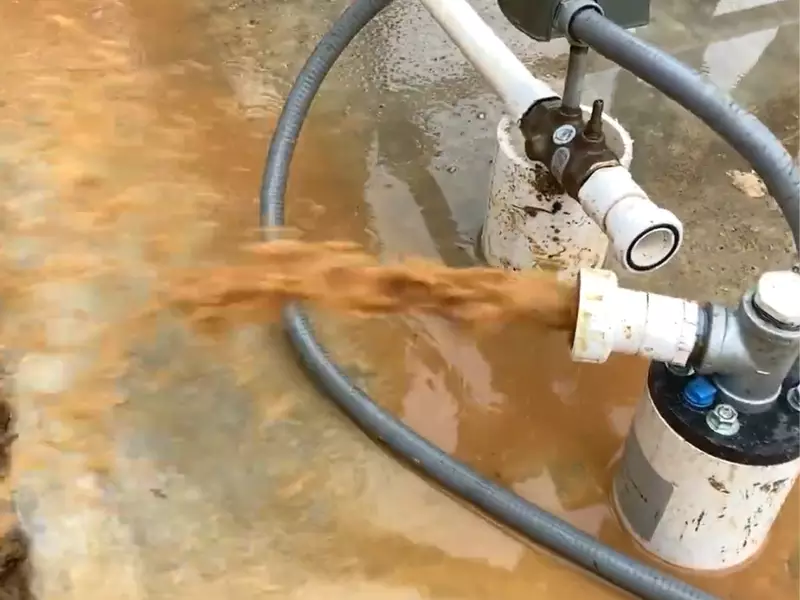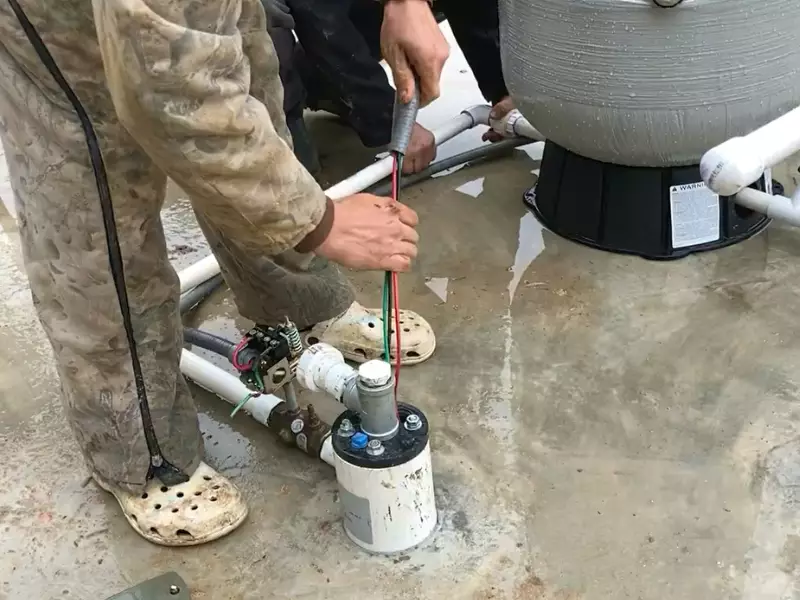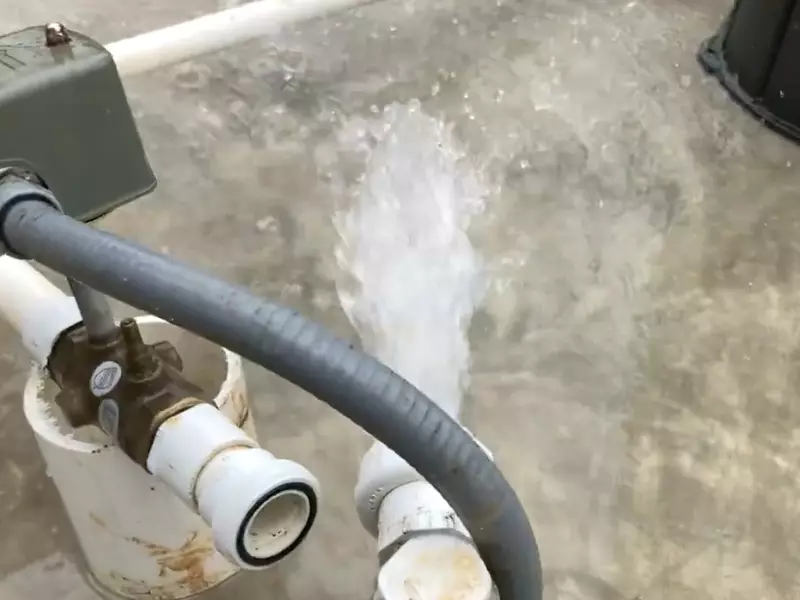Water is the essence of life, a vital resource that sustains our health and well-being. Among the various sources of water, well water is considered one of the most natural forms, directly sourced from underground reservoirs. However, like all water sources, well water has its unique challenges. Sediment, a prevalent issue in many wells, poses potential health risks and can impact the overall water quality.
Sediment in well water is a mixture of minute organic and inorganic particles that can infiltrate the water source. While some particles are benign, others may be detrimental, causing problems ranging from aesthetic concerns to health-related issues.
Sediment isn’t just a minor inconvenience. It has repercussions that can lead to considerable damage and financial implications if not addressed timely.
What is Sediment?
Sediment, in the simplest terms, represents the suspended or settled solid fragments present in water. These fragments can be varied in nature, and understanding their composition is crucial for effective water treatment.

Definition and Basics
Sediment is essentially an accumulation of organic and inorganic particles. These particles can be diverse, spanning from decomposed vegetation to tiny bits of rock. The size, concentration, and type of sediments can significantly differ depending on the geographical region, the depth of the well, and surrounding environmental factors.
Types of Sediment
- Sand: Coarse, heavy particles that often settle quickly to the bottom.
- Silt: Finer than sand, silt has a smooth texture and can remain suspended for a longer time.
- Clay: Extremely fine particles that can form a dense layer at the bottom or remain suspended, giving water a cloudy appearance.
- Organic Matter: Bits of plant decay, microorganisms, or even tiny aquatic creatures.
Common Sources in Well Water
Every well’s environment is unique, and hence the sediment composition can vary. Knowing the primary contributors can help in implementing specific preventive measures.
- Natural Erosion: Earth’s natural processes, like water flowing over rocks or soil, result in the erosion of the surface. This eroded material can find its way into the water, contributing to the sediment.
- Organic Material: As plants and organisms decay or are broken down, tiny fragments remain. In a well, especially those near forested areas or with organic matter on the surface, such particles can leach into the water.
- Well Construction and Age: Over time, the structure of a well can deteriorate. Cracks or breaks in its walls can allow surrounding soil or materials to seep in. Similarly, improper construction or lack of a proper seal can make the well vulnerable to external contaminants.
- Runoff from Surroundings: After heavy rains or floods, water runoff carrying loose soil, debris, and contaminants can infiltrate poorly sealed or unprotected wells.
Why Sediment Matters
Impact on Health
Not all sediments are harmful, but they act as carriers. Tiny particles can bind with harmful chemicals or even hide pathogens. Consuming untreated or inadequately treated water might expose individuals to these hidden threats. Prolonged consumption can lead to gastrointestinal diseases or other health complications, especially in vulnerable populations like children or the elderly.
Effects on Plumbing and Household Appliances
Regular flow of sediment-rich water can be taxing on household systems:
- Pipe Clogging: Sediments, especially finer particles like silt and clay, can accumulate in pipes, reducing water flow or causing blockages.
- Wear and Tear: Sand, being coarse, can erode the internal parts of appliances, such as washing machines, water heaters, or dishwashers, reducing their lifespan.
- Water Heater Sedimentation: Over time, sediment can settle at the bottom of water heaters. This not only reduces their efficiency but can also cause noise or damage.
Aesthetic and Sensory Concerns
Water is not just for drinking. We use it for cooking, cleaning, and bathing. Presence of sediments can:
- Alter Taste: Certain sediments can give a gritty texture or earthy taste to water.
- Change in Appearance: Sediment-laden water can appear cloudy or have visible floating particles.
- Bathing Issues: Sediments can affect the feel of the water, making it less refreshing for baths and potentially causing skin irritations.

Identifying Sediment in Well Water
Water clarity and quality should never be compromised. Knowing the signs of sediment presence ensures timely action.
Signs and Symptoms
While some symptoms are evident, others might require a keen observation:
- Visible Particles: Floating or settled particles in a glass of water.
- Water Discoloration: An unusual hue, typically brownish or cloudy.
- Reduced Pressure: Sediment build-up in pipes can reduce water flow.
- Residue: After using water, you might notice a gritty or muddy residue on surfaces.
Testing Methods
Before diving into solutions, it’s vital to understand the nature and extent of the sediment issue:
- Home Testing Kits: Available at hardware stores, these kits can provide a quick overview of water quality and sediment levels.
- Professional Water Testing: For a more comprehensive analysis, consider hiring water testing services. They can pinpoint specific sediment types and suggest tailored solutions.
Sediment Removal Methods
Clear water is both a comfort and a necessity. Thankfully, multiple methods can effectively tackle sediment issues in well water.
Filtration Systems
These are specifically designed to trap and remove sediments:
- Mechanical Filters: These work like sieves, using a mesh or screen to filter out larger sediment particles. They are simple but might require regular cleaning or replacement.
- Cartridge Filters: Designed as replaceable units, these trap a wide range of sediment sizes. The cartridge material and design can vary based on specific needs.
- Bag Filters: Essentially, these are bags made of fabric or other materials. Water flows through, leaving sediments trapped inside the bag.
Sediment Backwash Filters
A more automated approach, these filters trap sediments and automatically flush them out at set intervals. This ensures consistent water clarity and reduces manual maintenance.
Water Softeners and Conditioners
While their primary role is to combat hard water, they can also help in sediment removal. Some systems come with pre-filters that trap sediments before the water undergoes softening.
Maintaining Water Quality
Beyond installation, a proactive approach can keep water clear:
- Routine Filter Cleaning/Replacement: Over time, filters can become clogged. Regular checks ensure they function optimally.
- Well Inspection: Periodic well checks can identify structural issues or vulnerabilities, preventing sediment influx.
- Flushing the Well: This process involves pumping out water at high speeds, removing accumulated sediments from the well’s bottom.

Preventive Measures
Preventing sediment buildup is often more efficient and cost-effective than constantly treating the problem. Here are some strategies to consider:
Regular Well Cleaning
Regular maintenance is key to ensuring that your well remains sediment-free:
- Scheduled Inspections: Allocate time at least once a year to inspect your well for signs of wear, tear, or potential sediment sources. Detecting an issue early can save you from more significant problems down the line.
- Timely Repairs: If during inspections you notice cracks, loose seals, or any other structural issues, it’s vital to address these immediately. They could be potential entry points for sediment.
Landscape Management
The environment around your well significantly affects its water quality:
- Erosion Control: Plant grass or other ground covers to prevent soil erosion around the well area. This reduces the chances of soil particles entering the well.
- Diverting Rainwater: Ensure that rainwater runoff is directed away from the well. This reduces the risk of sediments and contaminants being washed into it.
- Buffer Zone: Maintain a clear zone around the well, free from activities that might stir up or introduce sediments.
Monitor Water Quality
Regularly test the water to detect any changes in its quality:
- Consistent Testing: Even if the water looks clear, unseen contaminants or sediments could still be present. A periodic test can confirm its purity.
- Stay Informed: Keeping an eye on local news or environmental reports can alert you to factors that might increase sediment risk, such as nearby construction or natural events.
Cost Implications
The economic aspect of sediment control can help you make informed choices.
DIY vs. Professional Solutions
Both approaches come with their pros and cons:
- DIY: Initial expenses can be lower, but there’s the need for regular manual intervention. Plus, incorrect procedures can lead to further complications or ineffective sediment removal.
- Professional Services: A higher upfront cost but guarantees expertise and often long-term solutions. They can offer tailored strategies for your specific well and sediment issues.
Long-term Savings
Investing in prevention and effective removal solutions can lead to:
- Reduced Appliance Wear: Appliances last longer when not constantly exposed to sediment, saving replacement or repair costs.
- Lowered Health Costs: Ensuring clean water reduces the risk of water-borne illnesses.
- Less Frequent Maintenance: Quality solutions might require less frequent maintenance, reducing long-term costs.
Frequently Asked Questions
Why is my well water cloudy?
Cloudiness, or turbidity, is often a sign of sediment suspension in the water.
Can sediments harm my health?
While most sediments are harmless, they can sometimes harbor harmful bacteria or chemicals.
How often should I clean my well to prevent sediment build-up?
It’s advisable to clean your well at least once a year, although this can vary based on your location and water usage.
Conclusion
Dealing with sediment in well water can be a challenging task, but understanding its origins and implications is half the battle. With the right measures in place, it’s possible to ensure clean, clear, and safe water for daily consumption.
Addressing sediment issues not only enhances water quality but also prolongs the lifespan of appliances and plumbing systems. It’s a proactive step towards safeguarding health, ensuring peace of mind, and making a worthy investment in the long run.